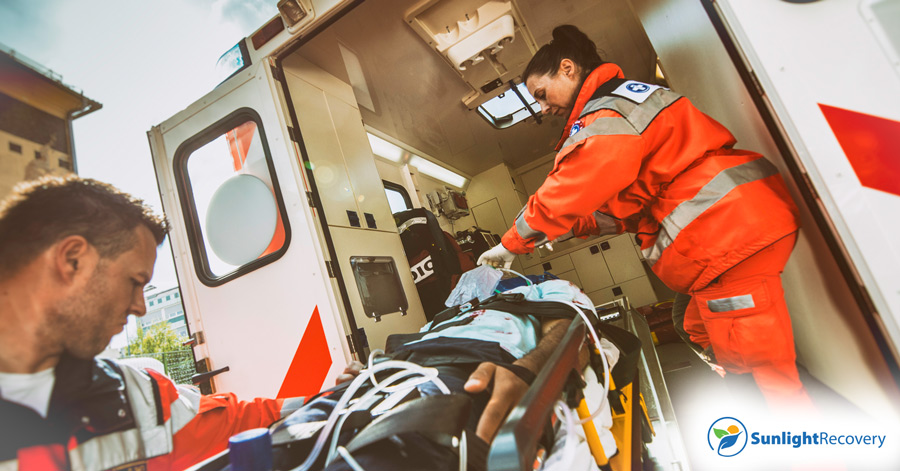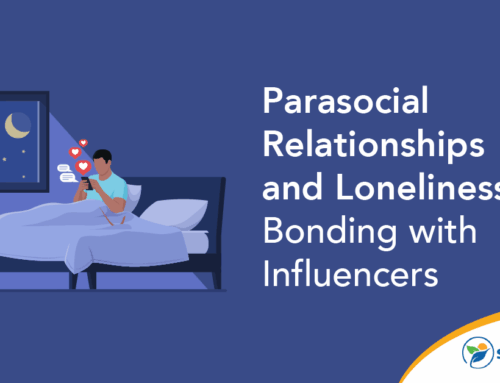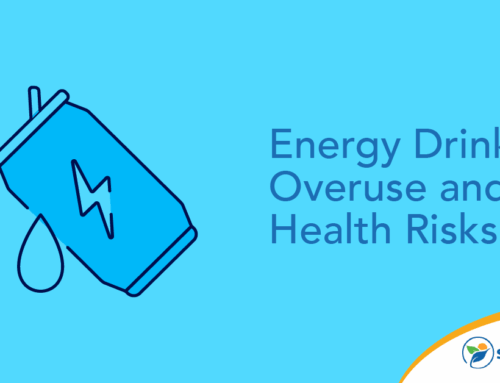Most people have heard about alcohol, marijuana and “harder” drugs, such as cocaine and heroin. Inhalants don’t get as much attention, since these aren’t typical drugs but other substances that have legitimate purposes apart from their recreational abuse.
Volatile substance abuse encompasses a wide category of ordinary household chemicals that, when inhaled, cause short, intense bouts of euphoria and equally fast crashes. There’s no safe amount of inhalants that people can use this way, and sudden death is a very common result of sniffing, or huffing as it’s also called.
Alarmingly, more than 2 million Americans report using inhalants in the previous 12 months, and use is at its highest among kids in eighth grade, or around age 13 or 14. Learn more about sudden sniffing death syndrome and the other potentially fatal consequences of using inhalants.
What Is Huffing/Sniffing?
Huffing is the practice of concentrating a household or industrial chemical in a bag and breathing the fumes deeply to get a euphoric high that lasts anywhere from a few seconds to several minutes. It’s distressingly popular among teenagers, who often lack access to more commonly abused narcotics like marijuana or prescription drugs.
The chemicals used vary widely, from industrial solvents to correction fluid, spray paint, lighter fluid or almost anything else that throws off harsh fumes.
What makes this practice so dangerous is the speed at which it works. Most of the substances used for huffing have very small molecules that pass through mucous membranes and into the bloodstream. If sniffed up the nose, they can directly contact the brain through the olfactory bulb where scent receptors are located.
Because they have such small molecules and pass easily through barriers, these substances can rapidly build up to critical mass in the blood, triggering a fatal reaction in seconds. Many of the most popular agents are also water soluble, so they pass out of the bloodstream nearly as quickly as they entered it. That can make proper identification of an overdose difficult or impossible.
Unless there are other clues near the body, such as a trash bag filled with gold or silver spray paint, the sudden death of a teenager might never be solved.
Common Substances Used in Huffing
The list of potential inhalants is virtually limitless. Toluene, trichloroethylene, butane, paint thinner, spray paint, furniture lacquer, polyurethane sprays and plenty of other substances have been found next to people who died suddenly while huffing. Correction fluid, nitrous oxide (laughing gas) from whipped cream and canned air of the kind people use to clean their keyboards are also targets for inhalant abuse. As a rule, if it throws off fumes and makes a person feel dizzy, it can potentially be used as an inhalant.
How Common Is Huffing?
In 2021, 2.2 million Americans admitted that they’d abused inhalants in the previous 12 months. Among 8th-graders, the age group most likely to try huffing, 3.6% reported abusing inhalants this way. That’s down from the shocking highs of the mid-nineties, when up to 11% of 13-year-olds claimed to have tried inhalants, but it still represents tens of thousands of young people doing potentially irreparable harm before they reach adulthood.
Teens and Inhalant Abuse
There are several reasons teens may be at special risk for huffing inhalants.
First is the relatively high availability of solvents and other common inhalants over more adult substances. Beer, wine, hard liquor and marijuana are far more popular substances for adults to consume, but in most places these are either sold under strict regulations or effectively decriminalized and sold over the counter to people aged 21 and over.
Harder drugs, such as cocaine, heroin and LSD, can also be hard to get for a 13-year-old child, who’s also unlikely to have the money to buy an eight-ball of cocaine or a lid of heroin from professional drug dealers. Inhalants, on the other hand, can be found under the sink in almost every home in America. The garage, school workshops and even shoplifting paint cans from the hardware store are all viable options for kids seeking out dangerous illegal highs.
What Are the Dangers of Solvent Abuse?
Solvent abuse carries a long list of dangers and basically no upside. In the short term, the tremendous high a user experiences is very disorienting and may cause heightened risk-taking behavior, such as walking in traffic or provoking fights with other people. People who’ve been huffing enough to get a longer-lasting high might spend several hours heavily altered and disoriented, often wandering aimlessly and getting lost, or attracting attention and getting arrested or taken to the hospital.
Over the longer term, inhaling harsh chemicals is a very effective method of damaging delicate tissues in the upper respiratory tract. After even a single use, inhalant abusers may get chemical burns on their nasal and oral passages, their windpipe and lungs. Repeated use can easily cause scarring at these sites, and there’s reason to believe that the cell damage comes with an increased risk of cancer.
Chemicals that cross the blood-brain barrier also have the potential to destroy brain tissue, which can cause permanent impairment and disability. The long-term effects of solvent abuse hardly matter for many users, however, since even a single huffing session can unpredictably stop the user’s heart or cause terminal neurological problems like a stroke or brain bleed.
Risk Factors for Huffing
Not every kid is equally likely to get into solvent abuse. Ironically, kids whose home environments include illegal drugs might actually be less likely to try paint thinner, since adequate substitutes are more available to them. As a rule, these risk factors are associated with huffing:
- Family history of substance abuse
- A personal history of drug abuse or mental health disorders
- Homelessness
- Gang affiliation
Strategies for Preventing and Treating Inhalant Abuse
If your child is in or adjacent to a high-risk category, you don’t have to wait to find an empty spray paint can to take action. By far the most effective prevention strategies for volatile substance abuse revolve around prevention.
Explain what inhalants are to your child and make it clear how dangerous they are. Keep volatile substances locked away and out of reach, and supervise their use when the kids are around. Above all else, create a family environment where your kids feel safe and know they can come to you for help when they’re in trouble.
Get Help for Volatile Substance Abuse
If you worry that talking isn’t enough, or if someone you care for is showing the signs of volatile substance abuse, you can act now to help them get through this. The recovery team at Sunlight Recovery has experience with huffing abuse and related problems. Contact us without delay for a free and confidential consultation.







